Of Artistry, Addiction, and Self-discovery: Forthcoming Memoir of Fantasy Artist Tom Barber
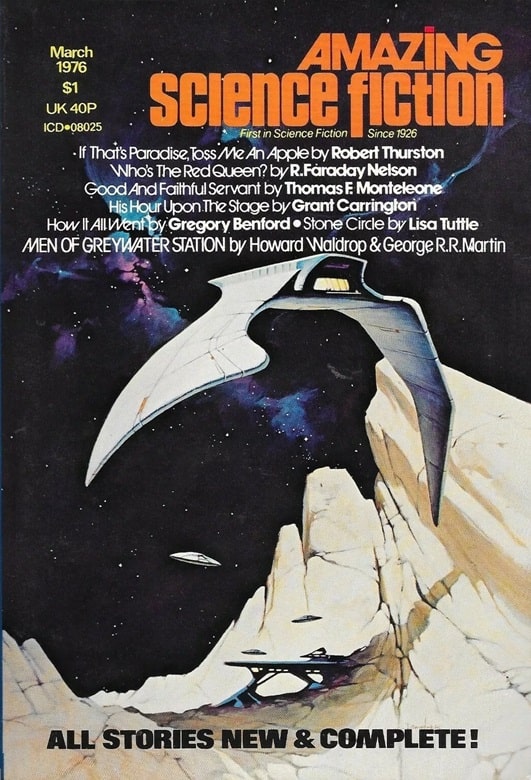 |
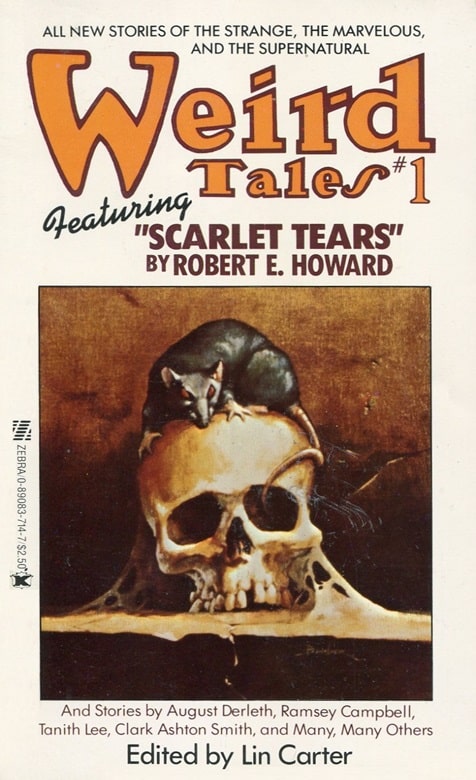 |
The art of Tom Barber: Amazing Science Fiction, March 1976, and the first issue of the
paperback version of Weird Tales, edited by Lin Carter (Zebra Books, December 1980)
The arts are not a way to make a living. They are a very human way of making life more bearable. Practicing an art, no matter how well or badly, is a way to make your soul grow, for heaven’s sake.
–Kurt Vonnegut
Tom Barber was working in a commercial art studio in the mid 70s when he walked into a local bookstore while on lunch break. He found a book of illustrations by N.C. Wyeth, picked it up, leafed through it.
Returning to work, he marched into his boss’ office and gave his two-week notice.
“I didn’t know what I wanted to do, but after looking at those paintings I knew it was something along those lines,” he said.
[Click the images for bigger versions.]
Tom at the canvas
That “something” was a lifelong commitment to the creative muse over the commercial. Wherever that path would take him.
Tom assembled a portfolio for Houghton Mifflin, a Boston publisher specializing in children’s books. And was promptly humbled. “I got my first interview with a real art director,” he said. “He looked through my work and told me I ought to find another line of work.”
Stung but undeterred, Tom took his ideas in a new direction. An architect friend reviewed his work and saw something the art director didn’t. He asked Tom if he’d ever been to a sci-fi convention. Tom hadn’t. So he painted several pieces and attended his first convention, art in tow.
And promptly sold every painting he had.
Buoyed by his success, Tom set his eyes on New York. “I started pounding the pavement, trying to get a cover on a magazine called Creepy,” he recalled. After a few failures, his first agent encouraged him to try sci-fi. Tom painted a beautiful spaceship against an alien backdrop.
That turned out to be his first cover, for the March 1976 Amazing Science Fiction, featuring a story by George R.R. Martin (aside: 43 years later Tom received an email from a scientist informing him that the March ’76 cover got him interested in aerodynamics and wind tunnel testing, and eventually to studying failure modes in US spacecraft). That same year Tom attended the New England Science Fiction Convention, met his second agent, and started selling regularly to New York publishers, including Zebra Books, an imprint of Kensington Books.
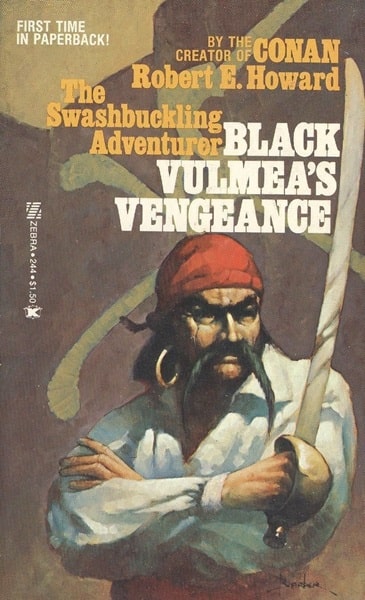 |
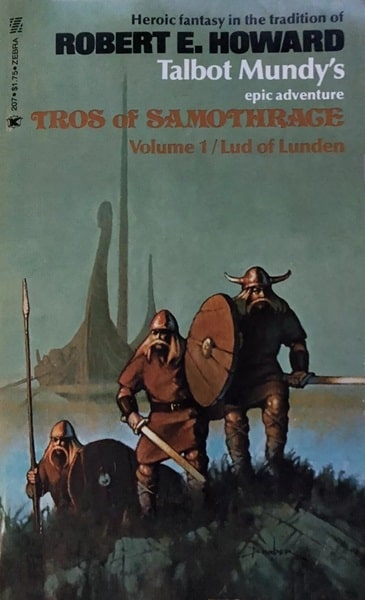 |
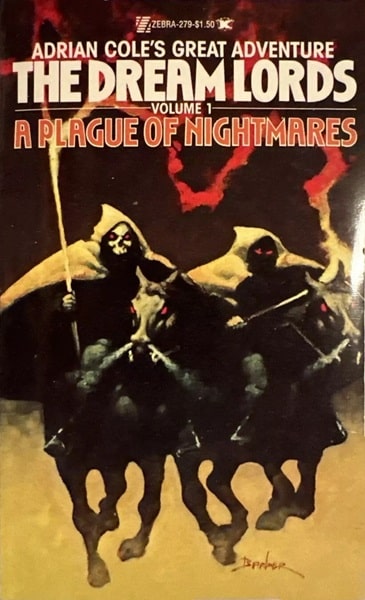 |
Zebra covers by Tom Barber: Black Vulmea’s Vengeance by Robert E. Howard
(March 1977), Lud of London by Talbot Mundy (September 1976), and
The Dream Lords: A Plague of Nightmares by Adrian Cole (July 1977)
Zebra published Tom’s work in a torrent, for the likes of the covers of Black Vulmea’s Vengeance (Robert E. Howard), Lud of London (Talbot Mundy), Andrew Offutt’s The Sign of the Moonbow, Adrian Cole’s The Dream Lords: A Plague of Nightmares, Lin Carter’s paperback revival of Weird Tales, Robert Bloch’s Mysteries of the Worm, and others.
The rest is history. “I found my niche,” he said.
That history will soon be revealed in full. Tom is currently working on a memoir of his creative life, which he hopes will be published by veteran owned and operated A15 Publishing. Its mission is to get veteran’s works in front of the reading public.
Tom is still painting these days, though as much or more of the natural world than S&S and SF. In addition to Frazetta and N.C. Wyeth he’s also a devotee of Claude Monet, and you can see clear inspiration of the French impressionist in his expansive skies and galaxies.
But Tom still takes regular detours into the weird and macabre. His new memoir will feature more than 60 pieces of art. Some are scenes from his life, but others are conceptual, and dark, reflecting his own dark struggles with alcohol addiction. So you’ll experience not just his story, but a large slice of his visual imagination.
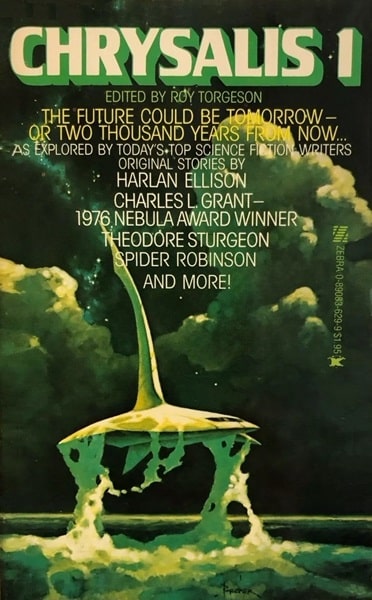 |
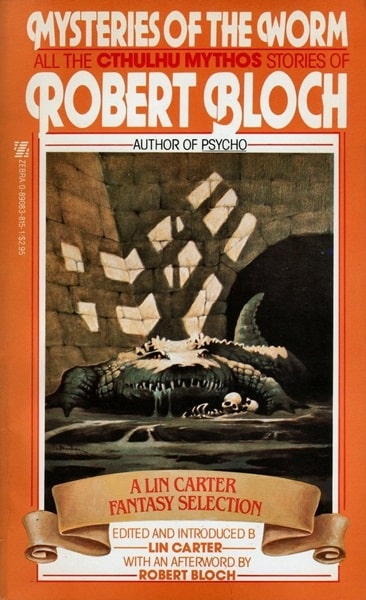 |
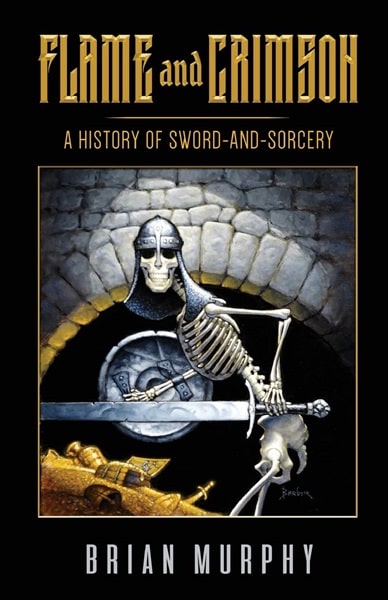 |
The art of Tom Barber: Chrysalis 1 edited by Roy Torgeson (Zebra, August 1977),
Mysteries of the Worm by Robert Bloch (Zebra, August 1981), and Flame and Crimson:
A History of Sword-and-Sorcery by Brian Murphy (Pulp Hero Press, January 2020)
Tom discovered his love of speculative fiction from the short-lived TV show Flash Gordon (1954-55), which he watched as a boy of eight. Later he discovered Conan and Frank Frazetta. “That took me off into the land of make believe. Or maybe I already had it in me and that woke it up,” he said.
His imagination never stopped working. In fact, he spends a good deal of his time wandering the halls of his mind. As a regular at the Vet Center in White River Junction, VT, attending readjustment counseling, he recalls standing with a bunch of other Vets in the kitchen one day. “As I was standing there, one of the psychologists came out and said to the group, ‘you know, just because you see Tom standing here in person, it doesn’t necessarily mean he’s actually here.’ I just spent a lot of my time in other worlds, my head in the clouds, my heart in the stars.”
Tom dwells in other worlds because he’s found this one rather chaotic. He served as a Vietnam-era army medic from 1968-71, providing bedside care for some grievously wounded soldiers returning from the jungle. The experience never left him.
In the early 80s Tom moved to Arizona, leaving behind the east coast and his promising art career. He attempted to keep working but his addiction got the better of him, and for a while he stopped painting altogether. Drinking not only derailed his career but nearly ended his life. He was fortunate to have friends who realized he needed help.
“Attack at Dawn” by Tom Barber
The memoir begins with him finishing off his last beer in a smoky little barroom full of drunk Indians up in Flagstaff, Arizona. This was followed by a 28-day, in-patient rehab program at the VA in Prescott.
“I knew if I didn’t stop drinking, I’d be dead. All the details are in the memoir.”
Tom reads books about Zen Buddhism and has tried meditation with limited success. Painting remains his principal form of meditation, his studio a place where the chaos stills.
After a series of sessions at the VA his counselor recommended Tom put his life to paper. Writing his memoir proved therapeutic.
“She said, ‘Tom, you’ve had an interesting life. Why don’t you write?’ So I went home and started writing. It took hold, and turned out to be a real eye-opener,” he said. “I was learning about myself, stuff I didn’t realize.”
The book is written for entertainment but also to let others suffering with addiction know that there is a way out. Tom doesn’t care who knows about his struggles. He hopes his story might help them in some way.
“One thing I don’t like about Alcoholics Anonymous is the word ‘anonymous.’ You’re not supposed to tell people,” he said. “Well, I always tell people because you don’t know who you’re standing next to. They could be ready to go home and shoot themselves.”
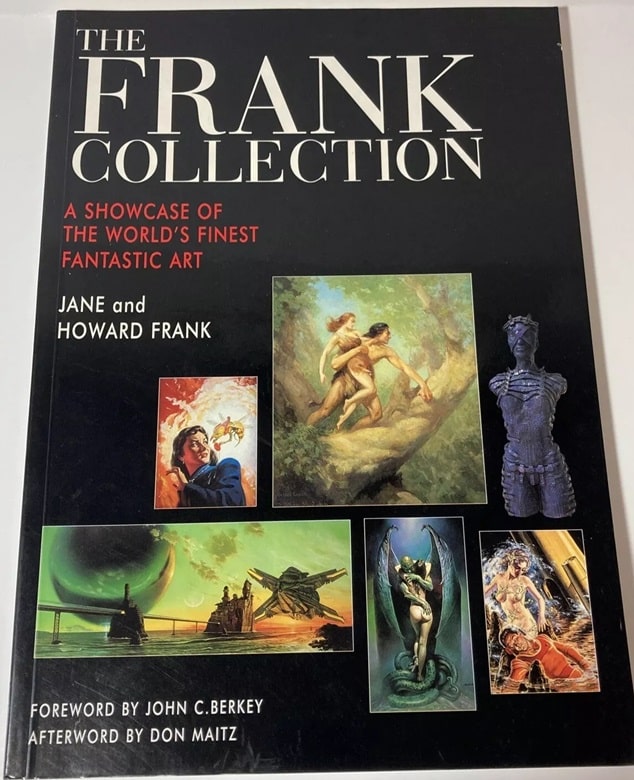 |
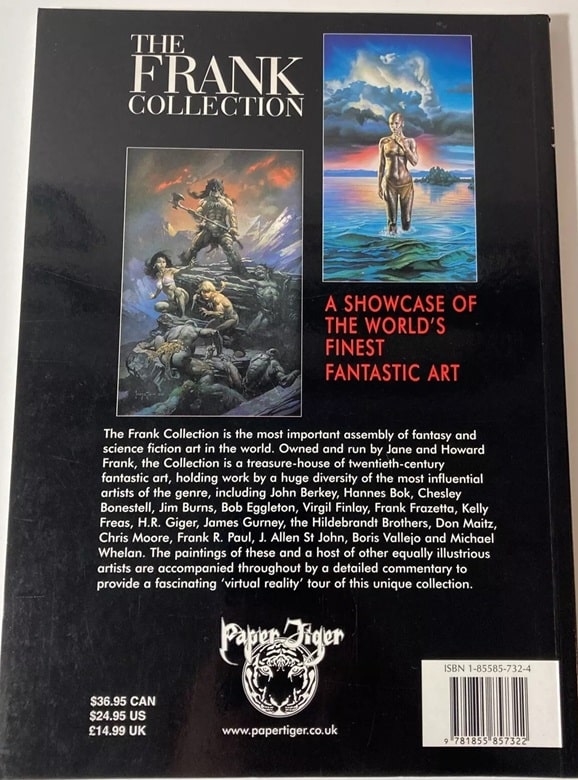 |
The Frank Collection (Paper Tiger, 1999)
At age 78 Tom is a survivor, and likewise his best work stands the test of time. Most of his classic work is in the hands of private collectors. In the noted collection, The Frank Collection: A Showcase of the World’s Finest Fantastic Art, the following short writeup accompanies his work, “Attack at Dawn”:
Watching over these sculptures, peering warily above the tops of their shields, is Tom Barber’s small army of armored warriors in Attack at Dawn, a personal work he created circa 1980. This is the first piece we purchased from him. We were immediately drawn to the image, always wondering, who and what army might those soldiers be confronting that morning? We lost track of Tom in the early 80s, when he moved out west to paint western scenes. And no one that we know in the fantasy art world has ever run into him again. That’s a shame because Barber was a great talent and if he had stayed in the field he would today be known to fans around the world.
And then one day, there he was. Sober.
“Attack at Dawn” now resides in the private collection of George R.R. Martin.
Jane recently asked him to create a new piece of commissioned art. Tom responded with a foray back into sword-and-sorcery, a muscled warrior battling a fearsome giant scorpion.
Today he continues to get occasional jobs, including some covers and private commissions. And he continues to live by the motto:
Art that isn’t shared with the world is only half finished.
Brian Murphy’s last article for us was Sword-and-Sorcery and the Problem of Genre. He is the author of Flame and Crimson: A History of Sword-and-Sorcery, the cover of which is painted by Tom Barber. He is looking forward to Tom’s upcoming memoir.
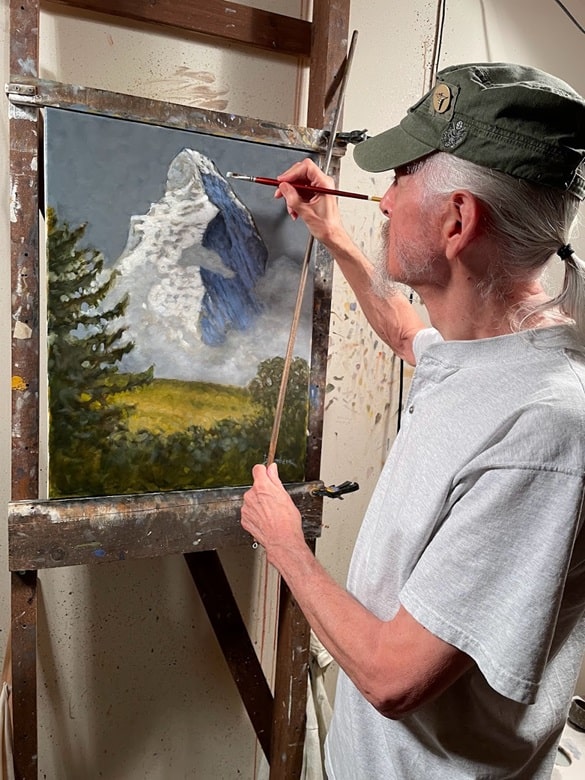
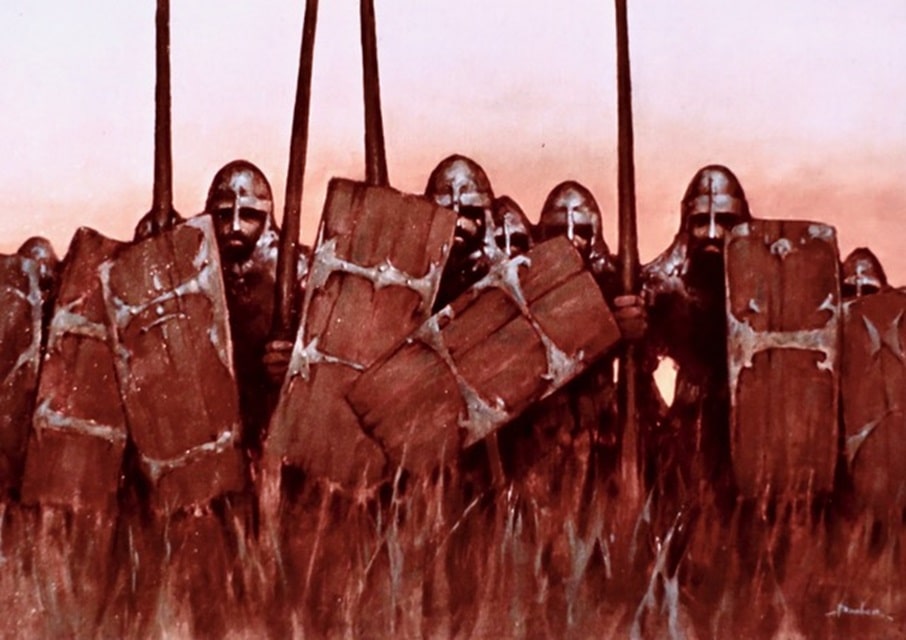

I remember that issue of Amazing. I like that cover.
I don’t remember if the Sheffield/Martin story was about sewage systems, though! 🙂
We absolutely love Tom’s work and are so honored to have met him. He is a gift to this world. I can only imagine all the pain he has been through and am so proud of him and his work.